Planting tomatoes from seed is simple, and nothing beats eating a fresh tomato that you watched develop from seed to fruit. In addition, starting tomato seeds allows you to grow any of the hundreds of different tomato varieties available in your area, even if you only have access to a few kinds of nursery starts.
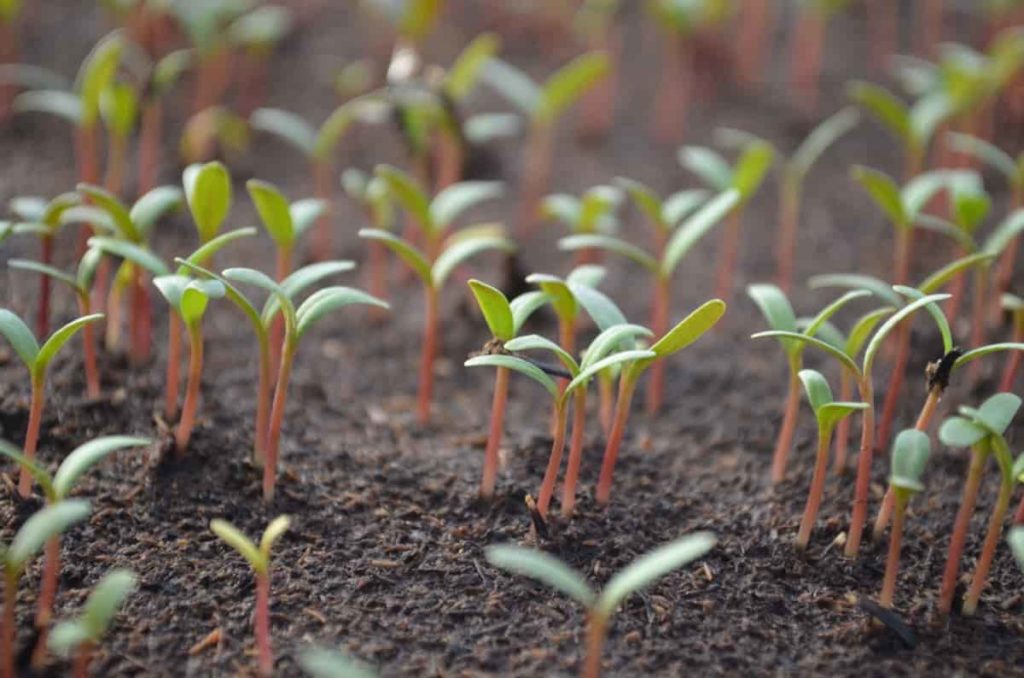
As one of the most popular crops to produce at home, tomatoes are easy to cultivate from seed, but picking up starting tomato plants from the nursery is a more complicated process. However, despite their reputation for being fussy, tomato seedlings can be successfully grown from seed. So let’s check out more information on the stages of growing Tomatoes from seed.
How long does it take Tomatoes to grow from seed?
Tomato seeds can germinate in 5 to 10 days, depending on the circumstances. When you observe a green plant emerge from the growing medium, you know the seeds have germinated. After sprouting, tomatoes can be harvested in 65 to 85 days. Buying tomato seeds online, at a hardware shop, or even at a local dollar store is easy and convenient. Six to two months before the last frost date, they can be started inside.
Stages of growing Tomatoes from seed
Selecting Tomato seeds
You’ll be able to choose the best tomato kinds for your garden if you understand the various sorts of seeds.
Heirloom seeds
A tomato that has been handed down through the generations that is an open-pollinated variety is called an heirloom. Flavour is the primary motivation for growing heirloom tomatoes! They are full of tastes that can’t be found in any other kind of fruit. On the other hand, heirlooms provide a wide range of fruit varieties in terms of size, shape, and color. Big rainbow, Pineapple, Brandywine, and Cherokee purple are among the most popular heirloom varieties.
Open-pollinated seeds
The wind, insects, or even gardeners can pollinate open-pollinated seeds. You can count on the seeds coming true if you store them. There is an exception to this rule: when pollen from other types has been introduced into the crop. There is a good chance that open-pollinated cucumber and squash varieties will cross-pollinate if you plant more than one kind. A single type of seed is safe to keep as long as it is open-pollinated. All open-pollinated seeds are heirlooms; however, not all heirlooms are open-pollinated. Ovarian cancer is a common occurrence in open-pollinated tomatoes.
In case you missed it: Guide to Growing Tomatoes in Florida: In Winter, Summer, Backyard, and Containers.
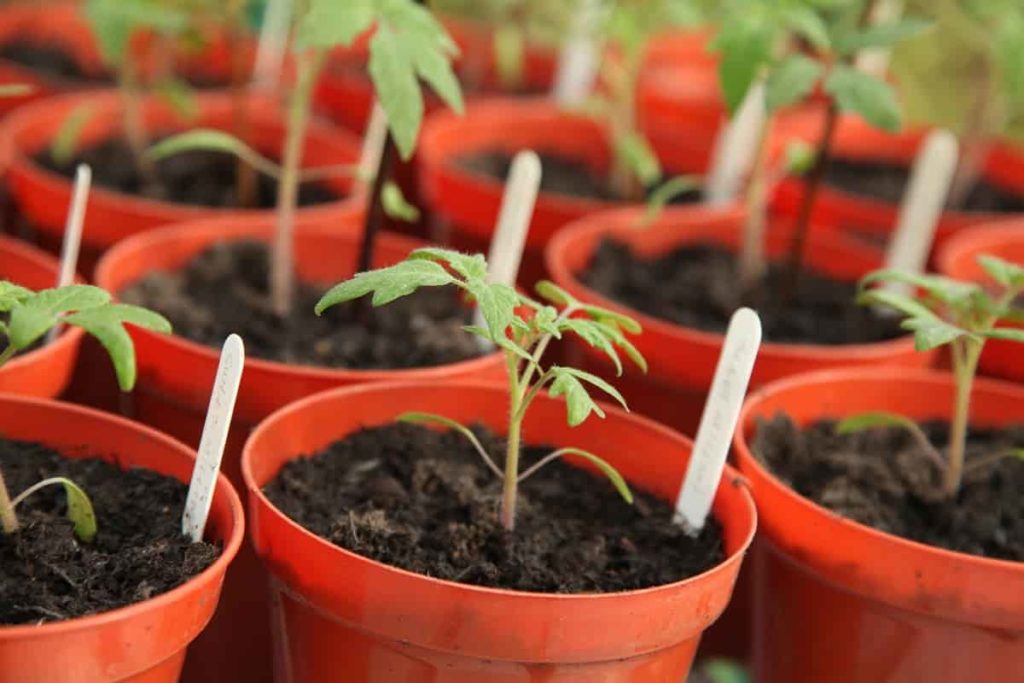
Hybrid seeds
In controlled pollination, the pollen from two different species or kinds is crossed by plant breeders to create hybrid seeds. They are often referred to as ‘F1’ cultivar in seed catalogs. Hybrid seeds can’t usually be kept since they don’t produce plants that are “true to type.” So what’s the point of hybrids? Improved features like disease resistance, vigor, and greater yields are standard in most hybrids. Tomatoes with golden, cherry-sized fruits like Sun Gold are a popular heritage variety.
Starting Tomato seeds
As a tomato grower, you must know when to start your seeds to receive the finest yield possible. You should plant these summer vegetables a few weeks after your expected last frost date. Growing a few weeks beyond this date gives you some breathing space in case of an unexpected late frost. To begin, find out when, on average, your location experiences its final frost.
Sow your tomato seeds on the assumption that you would transplant your seedlings into the ground around your last frost date, around four to six weeks before the date recommended on the package. That’s not how we’re going to approach it. Four weeks before the final frost, you can start your seedlings and have them ready for planting two weeks later. As a result, subtract four weeks from your last frost date. When it comes to sowing tomato seeds, now is the time.
How many Tomato seeds per hole?
For best results, tomato seeds should be sown in groups of two or three per hole. Seed germination is unique to each plant. It’s around 75% in the case of tomato seeds.
Germination process of Tomato seeds
Tomato seeds germinate in around seven to ten days if the soil temperature is between 65 and 85 degrees Fahrenheit. Warm soil, high humidity, and good air movement promote seed germination. Long growing seasons are required for direct seed germination outdoors, but it’s achievable. However, this takes a lot of work, and most gardeners don’t have a long enough growing season. Instead, sow tomato seeds inside six weeks before the last frost and then plant them outdoors after the threat of frost has passed. This will ensure the greatest results.
In case you missed it: The Best Fertilizer for Tomatoes in Pots
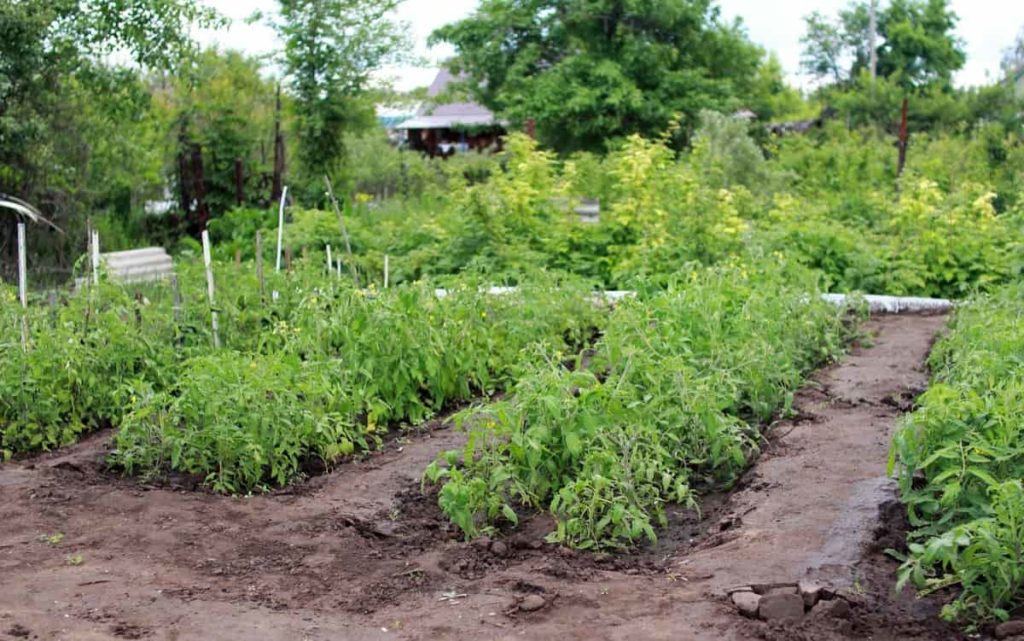
Tomato seed germination can be improved by following a few simple steps.
- Do not overload it with water, but keep the soil slightly moist. For seeds to germinate, the soil must be moist, and humidity aids in this process. Seeds germinate more quickly when they are protected from the environment.
- Seeds germinate more quickly when they are protected from the environment. Make certain that the soil and seeds are well ventilated before planting. After sowing the seeds, avoid compacting the soil and don’t wet the soil too much.
- To speed up germination, we use scarification. Sprouting tomato seeds does not need soaking, however, scraping the seed’s surface can speed up the process significantly.
- Keep your tomato seedlings warm. Tomato seeds germinate best at temperatures ranging from 65 to 85 degrees Fahrenheit.
Sprouting process of Tomato seeds
It is called germination only till the phase when the primary root is formed. After that, the next phase is sprouting. As soon as the primary root starts taking in water and nutrients, cells begin to create a small stem. The branch develops upward from the seed and eventually reaches the sun’s rays. The sprout emerges from the soil after just a few days. The plant’s resources and energy are now focused on the growth of leaves.
Provide sunlight
Seedlings that are strong and healthy need a lot of light. A lack of sunlight causes seedlings to grow long and leggy, ultimately causing them to topple over. Seeds should be started beneath a grow lamp, which allows you to manage the quantity of light they get. Using a bright window to grow tomato seeds in late January can result in some stretching. You should buy a grow light, such as a fluorescent bulb, if you want to do seed starting every year.
Add fertilizer to your Tomato plants
Before planting, some gardeners prefer to use various additives and fertilizers in the hole. Pre-planting composting is usually recommended, but it may also be added to the planting hole after it has already been dug. The following are some possibilities:
Baking soda: Some gardeners believe that planting tomatoes with baking soda in the hole would result in tastier fruit. Soil acidity can be reduced by scattering a little quantity of baking soda around the base of your plants.
In case you missed it: Growing Roma Tomatoes In Pots – From Seeds At Home

Epsom salt: When transplanting tomato plants, add one to two teaspoons of Epsom salt to the soil to ensure that the plants have enough magnesium. To prevent direct contact with the plant’s roots, use a thin layer of soil to cover Epsom salt.
Eggshells: Calcium can be increased in the soil by mixing eggshells. Flower end rot is caused by a shortage of calcium in tomato plants. Before planting, crush several eggshells and put them in the hole.
Kelp meal: The addition of Kelp Meal to the soil is an excellent source of micronutrients and trace elements, essential for plant growth and development. The nutrients in kelp meals, placed at the bottom of the hole, are released over time. A whole growth season may be accomplished with only one cup.
Bone meal: Bone Meal is an additional fertilizer that can be spread into the soil before growing tomatoes. Bone meal supplies most nutrients a plant needs to blossom and produce high-quality fruits in only a quarter cup serving. Phosphorus and calcium are both abundant in this food.
Coffee grounds: A delayed release of nutrients, including nitrogen, is provided by adding coffee grounds to the soil before transplanting. Nitrogen is more critical throughout the first two stages of development, whereas potassium is more critical in the last stage.
Mulching for your Tomato plants
Adding mulch to the soil around your seedlings after being transplanted helps maintain moisture and prevents dirt from splattering onto the bottom leaves. An organic mulch covering two to four inches thick is adequate. As an alternative to mulch, you may use hay or bark chips.
Caring for your Tomato plants
Every day, you’ll have to care for your baby tomato plants. A spray bottle filled with water can be used to moisten the soil when the earth’s surface is feeling particularly parched. Use a small watering can or teapot for larger plants that demand more water. To avoid overheating your germination station, open the windows. Growth is slowed when temperatures rise over 95°F in the home. Tomatoes that are just starting to form can be exposed to a light fan’s wind, or you can softly brush your hands over the leaves many times a day.
In case you missed it: Growing Organic Tomatoes From Seeds – At Home, In Balcony, Outdoors, Indoors, Terrace, Backyard.
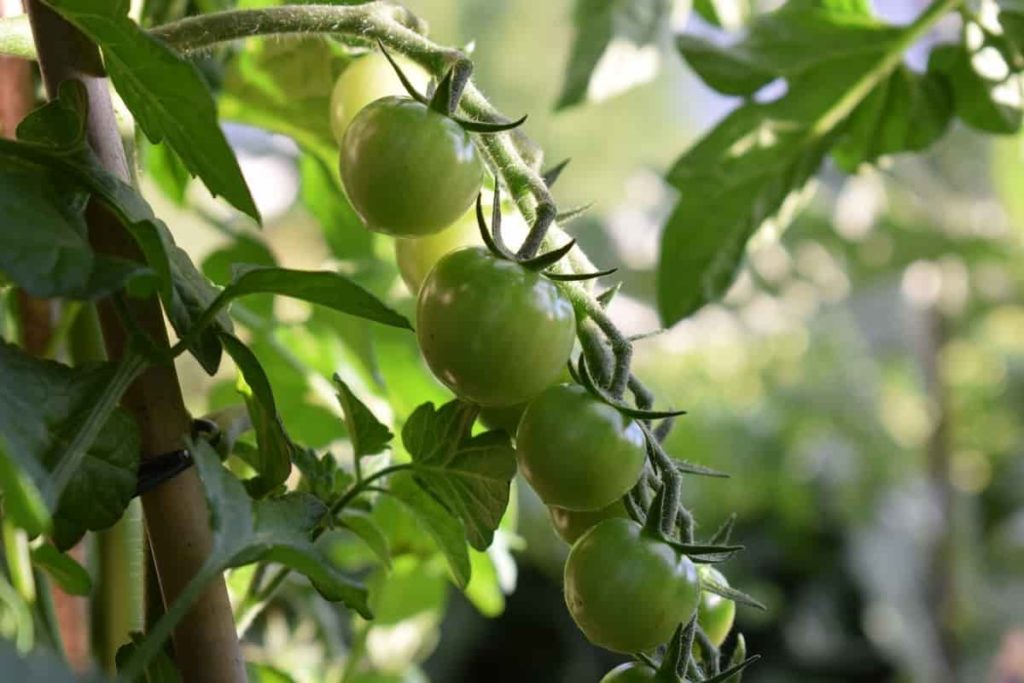
Your seeds may need to be thinned if they germinate well, and you end up with two or more seedlings in each cell of your tray. There are times when it is better to sacrifice some of your seedlings to keep just the strongest of the strongest in each cell. Then, the seedlings can be thinned simultaneously as they are replanted. Using a pair of scissors to cut the stems of the rejected plants just above the soil line is the safest technique to prevent damaging the surviving plant’s roots.
Snip each tomato seedling until you’re left with a single healthy tomato plant in each cell. Then, as long as the seedlings aren’t crowded and all seem beneficial at the time of repotting or transplanting, you should be able to take each one from the soil without culling any.
Tomato growth stages in days
Tomato growth can be explained in five different stages
- Germination: 5 to 10 days
- Early growth with initial leaves: 25 to 35 days
- Vegetative period: 20 to 25 days
- Flowering period: 20 to 30 days
- Early fruiting: 20 to 30 days
- Mature fruiting: 15 to 20 days
In each stage, the number of days varies according to the kind of plant and other environmental elements, including temperature, light, soil composition, and nutrients. Additionally, some cultivars have been developed for a particular environment or are more sun-tolerant, which reduces the time it takes for their fruits to ripen.
Most greenhouse tomato cultivars take 65 and 100 days from transplanting to reach the complete fruiting stage. Therefore, it takes between 50 and 65 days for an early variety of tomato to reach commercial maturity and between 85 and 95 days for a late variety to reach the same point.
In case you missed it: Growing Tomatoes In Greenhouse – In Winter, Pots
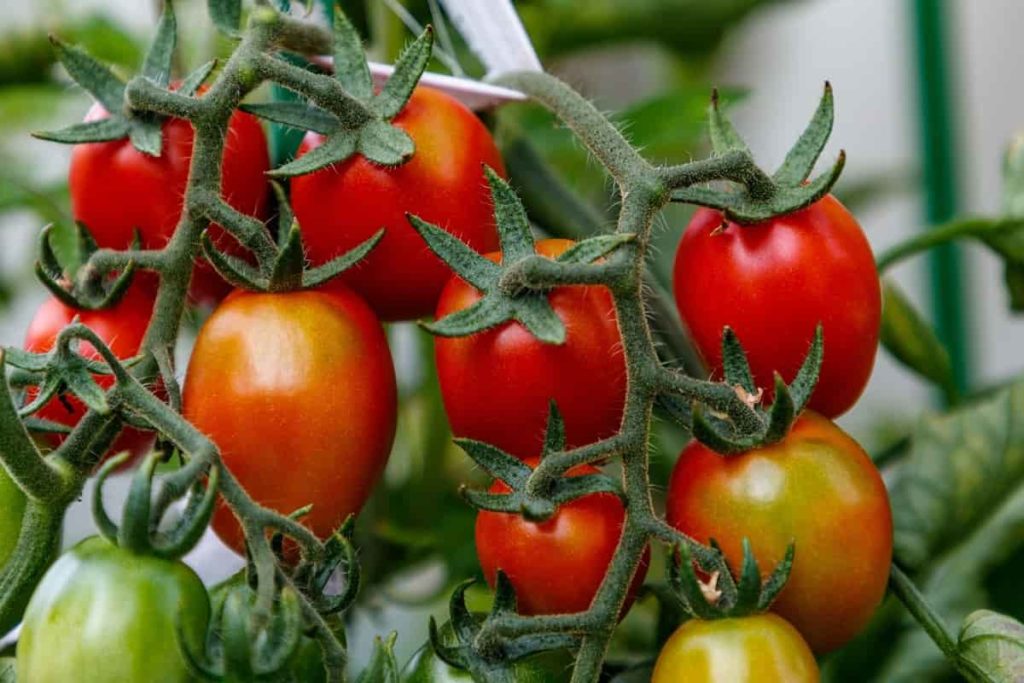
Problems that occur when growing Tomatoes from seeds
Leggy seedlings
When there is no adequate sunlight to your freshly emerged seedling, leggy seedlings are common. The seedling’s stem is slender and floppy, yet it develops quickly towards the light. It’s known as a leggy seedling by gardeners. To begin, either repot your existing plants or start fresh tomato seedlings. It’s best to bury the stem in the seed starting material, leaving just the sprout visible. A closer light source is needed after that. The light source is too far away, which is why this occurs.
Yellow leaves
There are many reasons why tomato seedlings develop yellow leaves. The most frequent basis is an excess or shortage of water, although it may also be caused by insufficient or excessive light. Overwatering and underwatering are both not suitable for seedlings.
Make sure your plants are getting enough light to thrive. Are there any more yellow plants in the area, or are there just a few? You may have irrigation issues if there are just a few plants. Next, examine the ground. Is it wet or dry? If the soil is dry, you’re not supplying enough water, but you’re watering them less often if the soil is moist. For best results, place a fan near the container where your seedlings are grown and ensure it has drainage holes.
Damping-off
The fungus Pythium and Rhizoctonia are responsible for damping-off. When this occurs, seedlings wilt and die in chilly, damp, rich soil. Early leaves become dark and wilt because of this illness. Seedlings are water-soaked and thinned. Only a tiny percentage of seedlings that have been infected with damping-off will go on to become healthy, full-sized plants. There is no treatment for damping-off, and it spreads fast. Remove any sick plants as soon as possible and place a small fan near your seedlings to increase airflow.
Pot bound
If you repot pot-bound seedlings before they hurt their growth, they will recover fast. In this state, seedlings will be stunted and eventually die since they cannot develop. Put soil at the bottom of a big container. Make sure to carefully loosen your seedling roots by removing them from their present container. Fill the new container with soil and plant it. Ensure that your seedling gets enough water, and it will recover rapidly.
Observation of tomato plant growth day by day
The tomato plant goes through the following phases when observed from the time they are grown from seed.
In case you missed it: Growing Cherry Tomatoes At Home – In India.
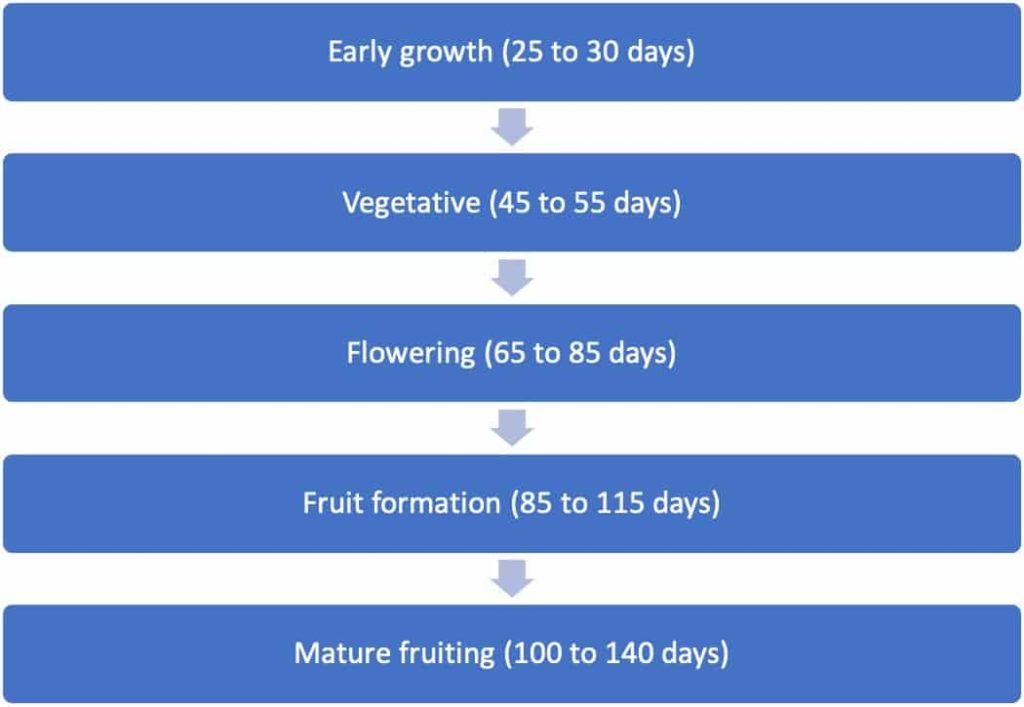
- How to Grow Tomatoes Organically at Home: A Comprehensive Guide
- Organic Gardening on a Budget: Low-Cost Methods and Materials
- Gongura Seed Germination and Planting Methods
- Cabbage Seed Germination and Selection
- Broccoli Seed Germination and Selection
- Asparagus Seed Germination and Variety Selection
- Seasonal Flower Gardening: Best Practices for Spring, Summer, Fall, and Winter
- How to Grow Hibiscus from Flower
- Plantation Ideas for Home Decoration: A Beginners Guide
- Flower Garden Designs and Layouts for Beginners
- Planting and Spacing Techniques in Papaya: A Beginner’s Guide
- Growing Gold: Essential Techniques for Planting Pineapples
- How to Make Kalanchoe Plant Bushy: Home Remedies and Solutions
- 11 Reasons Why Your Gardenia is Not Blooming: Home Remedies and Solutions
- Eco Elegance: The Guide to Designing a Drought-Tolerant Landscape
- Gardening on a Slope: Strategies for Hillside Landscaping
- Nourish and Flourish: Top Organic Mulches for Thriving House Plants
- Everything You Want to Know about Indian Mogra Flower: Discover Uses and Growing
- Green Thumb Success: Expert Tips for Cultivating Greenhouse Pumpkins All Year Round
- Maximize Growth & Flavor: The Ultimate Guide to Companion Planting in Herb Gardens
- How to Control Rhododendron Problems Naturally: Home Remedies and Organic Ways to Fix Them
- Natural Magic: The Remarkable Benefits of Cinnamon for Plants
- Best Steps to Revive Dying Tulip with Natural and Organic Treatment
- 10 Reasons Why Your Angel Trumpet is Not Blooming: Remedies and Treatment
- How to Fix Periwinkle Leaf and Flower-Related Problems: Natural Remedies and Solutions
- How to Fix Zinnias Leaf and Flower Problems: Discover Natural and Home Remedies
- Organic Steps to Induce Lemon Tree Flowers: A Comprehensive Guide
- Bloom Booster: Crafting the Perfect Homemade Bougainvillea Fertilizer
- Optimizing Growth: A Guide to Applying NPK Fertilizer for Potted Plants
- 10 Best Homemade Fertilizers for Rubber Plant: DIY Recipes and Application Method
- How to Boost Female Pumpkin Flowers: Effective Steps for More Flowers and High Yields
- Transform Your Indoor Garden: Top Benefits of Pink Salt for Houseplants
- 10 Best Homemade Fertilizers for Peacock Plants (Calathea): Easy DIY Guide
- Unlock Blooms: 9 Reasons Why Your Potted Chrysanthemum is Not Blooming
- 8 Reasons Why Your Potted Hibiscus is Not Blooming: Fix it with Simple Solutions
- Unlock Blooms: 9 Key Reasons Your Potted Frangipani Won’t Flower